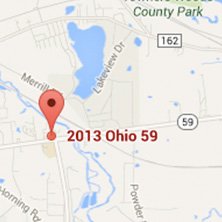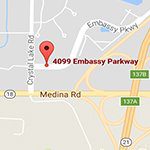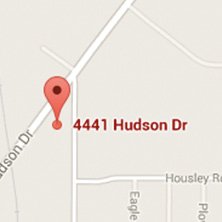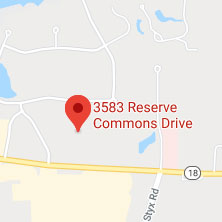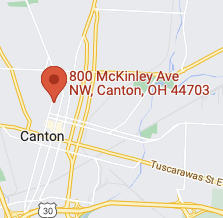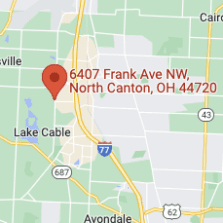Macular Degeneration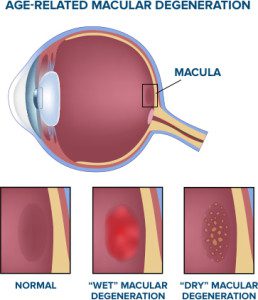
Age-related macular degeneration (AMD) is a disease that affects the macula, known as the central part of the retina. The macula is the thin membrane of tissue at the back of your eye and it contains many nerve cells. These cells transform light into signals that tell the brain what you are seeing. Macular degeneration causes these light-sensitive cells within the macula to break down.
Age-related macular degeneration is the most common cause of vision loss in patients over age 60, and it affects more than 10 million Americans. This disease can make detailed tasks very difficult, such as:
-
Reading and driving
-
Identifying faces
-
Recognizing colors
Age-related macular degeneration symptoms include:
-
Blurry or wavy vision
-
Central vision loss
-
Some patients may still retain peripheral vision
Dry Macular Degeneration
Dry macular degeneration affects 90% of patients with this disease. It occurs when light-sensitive cells within the macula slowly die, causing less of the macula to function properly.
Wet Macular Degeneration
Wet macular degeneration occurs when new blood vessels under the retina start growing toward the macula. These new vessels tend to be fragile and often leak blood and fluid under the macula. This causes rapid damage and leads to severe central vision loss.
Risk Factors of Macular Degeneration
Risk factors of developing age-related macular degeneration have been linked to:
- Poor diet
- Obesity
- Smoking cigarettes
- Those with a family history of the disease
While Caucasians are at a higher risk of developing AMD, it is important to note that those over the age of 75 have a 30% increased risk of developing this disease. Our retina experts at Northeast Ohio Eye Surgeons will be happy to discuss your risk factors for developing AMD and set up an appropriate treatment plan.
Treatment of Dry Macular Degeneration
While dry macular degeneration cannot be cured, there are therapies and supplements that your doctor can recommend to lower the risk of developing advanced AMD.
- Nutritional Therapy- Eating a healthy diet high in antioxidants can help support macular cells.
- Vitamin Supplements- support macular cell structure and function. These vitamin supplements have shown to lower risk of advanced dry macular degeneration and reduce risk of vision loss.
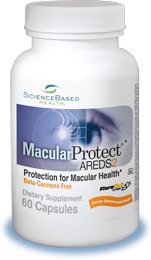
In other studies, Lutein and Zeaxanthin, which is a carotenoid plant substance that is found in the macular pigment, have also been linked to decreasing the risk of developing dry macular degeneration in the non-advanced form. These substances can be found naturally in dark green leafy vegetables or in dietary supplements.
Northeast Ohio Eye Surgeons advise a dilated eye examination and discussion with your eye doctor before choosing a dietary supplement to help identify your risk characteristics. Your family physician should also be contacted to ensure these supplements would not interfere with other medications or systemic conditions you may have.
Here is a sample of the contents in the eye vitamins for macular degeneration self-care, also called the AREDS formulation. The most recent formulation is called AREDS2, which does not contain beta-carotene, formerly linked to increased risk of lung cancer in smokers. AREDs2 contains lutein or zeaxanthin.
Treatment of Wet Macular Degeneration
Although there is no cure for wet macular degeneration, the improvement of Anti-Vascular Endothelial Growth Factor (Anti-VEGF) therapy within the last 20 years could help to:
-
Reduce the burden of disease
-
Stabilize vision
-
In some cases, improve vision
Typical treatment for wet macular degeneration includes monthly injections, roughly every four to six weeks. Once your doctor feels your macular degeneration is less active, treatments may be able to be spaced out.
The goal of this treatment is to deliver the least amount of injections necessary to decrease the activity levels of the abnormal blood vessel growth surrounding the center of your vision.
Amsler Grid Testing
It is important for all patients with macular degeneration to monitor their vision with home amsler grid testing. Weekly Amsler grid monitoring can signal if there may be a change in your vision due to macular degeneration. It is recommended to cover each eye separately when looking at the grid, about 14-16 inches away from your face. If you notice changes in the grid appearance from week to week, such as lines missing or becoming wavy and distorted, it is important to call your doctor’s office as this could signal a change in your macular degeneration.
Age-Related Macular Degeneration FAQs
What is age-related macular degeneration?
Age-related macular degeneration is a condition affecting the macula, the central part of the retina, causing blurred or lost central vision.
What are the early warning signs of age-related macular degeneration?
Early signs include difficulty reading, distorted lines, or dark spots in the center of your vision.
Are there different types of macular degeneration?
Yes, dry macular degeneration is gradual and more common, while wet macular degeneration is less common but can cause rapid vision loss.
How is age-related macular degeneration diagnosed?
Diagnosis includes a comprehensive eye exam, retinal imaging, and sometimes an Amsler grid test for central vision changes.
Can diet or lifestyle changes prevent age-related macular degeneration?
A diet rich in leafy greens, omega-3 fatty acids, and antioxidants, along with quitting smoking and regular eye exams, can reduce risk.
What treatments are available for macular degeneration?
Dry macular degeneration may be managed with nutritional supplements, while wet macular degeneration is often treated with anti-VEGF injections or laser therapy.



